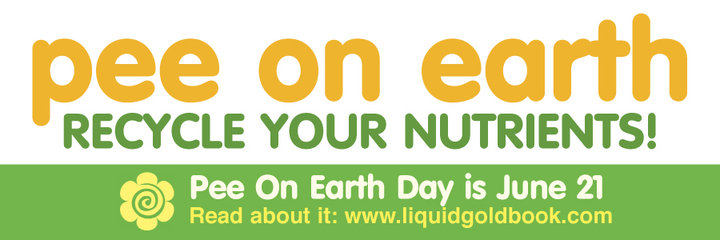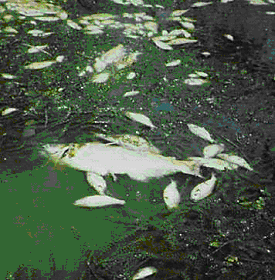
June 21 was Pee-On-Earth Day: A day on which celebrants are invited to direct their urine to soil* and not to flush it away in toilets.
Save a flush, give a plant a snack. There are some guidelines:
Divert it (keep it separate from the brown stuff).
Dilute it (I often don’t, but best practice is one part urine to five parts water).
Distribute it (don’t pour it all in one place—that’s how you get the dead spots in the lawn).
It can be done discreetly via jars, bottles, containers, behind trees, and so forth. Unlike a performance artist who wrote a book of the same name, the emphasis isn’t direct deposit of urine just anywhere outside including asphalt. No, it’s about returning the nutrients to soil or compost where they can be used.
It was established in 2004, the same year as the release of a certain book, and was somewhat inspired by the story of “Pee Outside Day,” which, according to a report, was declared by a priest in Sweden who encouraged his following to take the outdoors for their micturation. While this got some media attention, Swedish urine researcher Dr. Jan-Olof Drangert let me know this was really just a small one-off event.
Since 2004, Pee-On-Earth Day has been growing in renown. A Texas musician wrote a song about it. It’s listed in a publisher’s guide to national holidays and observances. People have created Facebook pages about it. Mention it in a room and folks will either go silent or laugh.
It’s about the nitrogen.
Diverting urine from wastewater treatment plants is getting more relevant. As federal and state laws grow stricter, more and more wastewater treatment plants are upgrading to denitrification or “tertiary treatment.” Tertiary means they are removing the nutrients in the wastewater. The source of most of those nutrients in most cities: human excreta, and even more specifically for nitrogen: urine.

Why is nitrogen removed from wastewater? Because much, if not most, treated wastewater is discharged to rivers, the sea, or to the soil where it can end up in groundwater. If the nutrients are left intact, it’s like emptying a bag of fertilizer into the water. And that causes problems as things grow like mad then die and decompose, using oxygen in the water
It’s about the energy—and carbon emissions.

Removing nitrogen takes a lot of energy. Very simply put, denitrification involves blowing a lot of air into tanks of wastewater to create aerobic-anaerobic, or “anoxic,” conditions that convert the nitrogen to a gas form. Imagine blowing air into a straw of a thick milkshake: You’d be winded after a bit.
As the director of Palo Alto’s (California) wastewater treatment plant said, if everyone diverted urine, the city would save significant money. The denitrifying wastewater treatment plant accounts for the city’s biggest energy bill.
My current California city, San Mateo, is constructing a new wastewater treatment plant that will provide tertiary treatment of the wastewater it treats and discharges to San Francisco Bay. City Hall is doing this in anticipation of federal laws requiring the City to do this. San Mateo might be surprised by its energy bills after this is built.
So, aside from saving water for flushing, the value of using urine’s nutrients directly in the soil to grow plants is going to be clearer to more and more people going forward.
Here’s my Facebook page for the day: Pee-On-Earth Day
Read more in Liquid Gold: The Lore & Logic of Using Urine to Grow Plants.


Pingback: Pee-on-earth Day is June 21! – Yet Another Unitarian Universalist
Greenbare Woods
22 Jun 2023Good for you. Pee is a boon to all green plants, and 100% natural recycling.